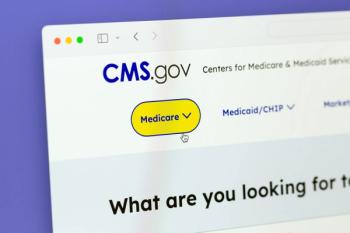
- MHE November 2023
- Volume 33
- Issue 11
Reducing Low-Value Care in Oncology
The Choosing Wisely campaign has helped with overscreening and overtreatment. Some experts say better management of end-of-life care and value-based payment would also help steer oncology away from care with poor cost-benefit ratios.
A 2019 JAMA study estimated that 25% of all healthcare expenditures (somewhere between $760 billion and $935 billion) are the result of waste in the U.S. healthcare system. Of this total, the portion due to overtreatment or low-value care was estimated to be in the range of $75.7 billion to $101.2 billion.
A great deal of this waste is occurring in the oncology realm. Low-value care in oncology encompasses various aspects, with two common forms being overdiagnosis and overtreatment of cancer, as well as aggressive end-of-life cancer care.
“Overdiagnosis and overtreatment occur when cancer screenings, such as prostate-specific antigen testing for prostate cancer, are ordered without considering the likelihood of providing significant benefits,” says Amir Alishahi, M.D., Ph.D., M.P.H., co-director of the Cancer Care Delivery Lab at the Moffitt Cancer Center in Tampa, Florida. “These screenings may lead to the identification and treatment of indolent or slow-growing cancers that may not have caused harm during a patient’s lifetime.”
Consequently, individuals may undergo unnecessary invasive procedures, surgeries or treatments that can result in physical and psychological burdens without improving outcomes.
Aggressive end-of-life cancer care involves providing treatments or interventions near the end of life that may offer limited benefits while subjecting patients to potential harm. This includes emergency room visits, intensive care unit admissions and chemotherapy administered in the final stages of cancer when the potential benefits may not outweigh the associated risks and burdens.
“In such cases, patients may experience unnecessary suffering and diminished quality of life without substantial improvements in their overall prognosis,” Alishahi says.
“Despite the implementation of educational campaigns such as Choosing Wisely and the introduction of financial incentives and penalties by payers, the issue of low-value care in oncology remains a significant problem in cancer care delivery,” Alishahi says. “While these initiatives have contributed to a positive trend toward reducing low-value care, there is still much work to be done to address this issue comprehensively.”
Andrew Hertler, M.D., chief medical officer at Evolent, divides low-value oncology care into three broad categories: treatment decisions, hospitalization prevention and end-of-life care.
“Oncologists have multiple different choices of anti-cancer therapies in any clinical scenario. Though all (are) supported by guidelines and drug compendia, they are not all equivalent,” he says. “In some cases, one or more of these choices may offer outcomes which are inferior or not demonstrably superior to alternatives that are substantially less costly.”
He also explains many hospitalizations for patients with cancer are for complications of therapy, and it is estimated that up to 50% of these are preventable with improved outpatient management and access to care.
“There is wasted spend at the end of patient life,” Hertler says. “All too often, patients are continued on therapy in advanced clinical settings when the risk of toxicity is much greater than the chance of benefit. Palliative care and hospice are underutilized and, when they are utilized, it is often too late.”
A wise solution
In 2012, Choosing Wisely, a partnership between the ABIM Foundation and nine national specialty societies, was born, designed to promote clinician-patient conversations about frequently performed tests and
treatments that might do more harm
than good.
Initially, it released 45 examples of tests or treatments that were commonly used in their fields but lacked strong supporting evidence. Between 2012 and 2023, more than 80 specialty societies highlighted
additional examples.
For example, the partnership funded an implementation effort with 14 health systems, each focused on reducing the use of antibiotics for respiratory infections in adults.
Last year, Choosing Wisely ceased maintaining and publishing recommendations, instead encouraging specialty societies to publish individual lists going forward.
However, Choosing Wisely made a big difference, generating countless conversations in the exam room and across the health system, stimulating thousands of journal articles and inspiring more than two dozen similar campaigns in other countries, all in an effort to explore ways to reduce overuse and unnecessary services to improve patient outcomes.
Choosing Wisely was just one part of the solution to the problem of low-value care, and for things to improve, experts believe changes need to be made at the system, physician and policy levels.
One important effort has been the Center for Medicare & Medicaid Innovation’s (CMMI) Oncology Care Model, which paid oncologists for value rather than simply the volume of patients seen and treated with chemotherapy.
“Though only modest improvements were seen in the cost of care, the model provided an impetus in general to the industry to begin to shift to value-based payment plans for oncologists,” Hertler says. “CMMI is launching a follow-up pilot, the Enhancing Oncology Model. Given that as many as 50% of patients with cancer are covered by Medicare, CMMI can move the entire industry toward value-based payment models, which pay for the care delivered rather than the quantity of patients seen and drug margin.”
Decision support tools
Efforts to combat low-value care in oncology have yielded some positive results. “Educational campaigns like Choosing Wisely have successfully raised awareness among physicians, empowering them to engage in discussions with patients about the appropriateness and potential harms of certain interventions,” Alishahi says.
Additionally, the implementation of value-based payment models has incentivized providers to deliver high-quality, cost-effective care. By aligning financial incentives with patient outcomes and healthcare costs, healthcare systems are encouraged to prioritize interventions that have proven effectiveness and value while discouraging unnecessary or low-value treatments.
“However, despite these advances, there are still barriers to overcome,” Alishahi says. “Clinical practice variation persists, with some physicians continuing to utilize low-value interventions due to entrenched habits, patient demands or fear of potential legal repercussions. Furthermore, information asymmetry and lack of real-time decision support tools in clinical settings can hinder providers’ ability to make evidence-based choices and reduce low-value care.”
Alishahinotes that the integration of a decision support tool within the electronic health record system has emerged as a highly effective component among interventions aimed at reducing low-value care. However, it is important to recognize that de-implementation is a complex process influenced by various factors at multiple levels.
“Merely disseminating evidence and expecting clinicians to voluntarily follow new guidelines is unlikely to yield significant results,” he says. “To achieve meaningful reductions in low-value care, a shift from passive to active de-implementation strategies is essential. This involves purposeful interventions that target workflow modifications and implement systems conducive to change.” When considering de-implementation interventions, he adds, it is also crucial to examine their association with both individual-level and collective-level factors.
“Individual-level factors encompass clinicians’ perceptions of appropriate use and overuse of health services in oncology,” Alishahisays. “Understanding clinicians’ behaviors and motivations is vital in effecting change. Successful interventions must focus on modifying clinicians’ behaviors while also considering the role of patients in decision-making processes.”
Patient engagement, particularly through shared decision-making, has shown promise in reducing low-value care. Recognizing patients as active participants in their care can facilitate more informed and appropriate treatment decisions.
“Moreover, it is important to acknowledge that patients may have varying attitudes toward different aspects of cancer care,” Alishahi says. “While patients may generally express a preference for fewer medications, they often believe that more testing and screening lead to improved outcomes. Tailoring interventions to address these nuanced perspectives is crucial for effective de-implementation strategies.”
Clinician-level factors, such as knowledge, interpersonal skills, motivation, professional confidence and beliefs about the consequences of practicing low-value care, also play a significant role in determining the cessation of certain low-value practices. Identifying and addressing these factors are critical to driving change within clinical settings.
In addition to individual-level considerations, collective-level factors also influence the utilization of low-value care. Organizational culture, leadership, available resources and financial status all contribute to the prevalence of low-value care within healthcare systems. Addressing these collective-level factors through supportive policies, robust leadership and resource allocation can foster a culture that prioritizes high-value care and discourages low-value practices.
Prior authorization
Many providers see prior authorization by health insurers as, at best, a bureaucratic intrusion by insurers into care that they have prescribed. But David Allen, a spokesperson for AHIP, the health insurance trade group, arguesthat prior authorization is one tool health insurers rely on to ensure that patients are getting safe and evidence-based treatment
“Health insurance providers know that prior authorization can be improved and are committed to reducing unnecessary burden, increasing patient and provider satisfaction and improving quality and outcomes,” he says. “AHIP’s Fast PATH initiative demonstrated how moving to electronic processes for PA (prior authorization) can dramatically improve the process for patients and providers.”
In addition, there are programs called gold carding that selectively waive or reduce prior authorization requirements for providers who meet a certain level of performance and/or demonstrate adherence to evidence-based medicine. AHIP recently conducted a survey of health insurers on the use and impact of gold carding, finding that its use has
increased since 2020.
Still, prior authorization helps save money for patients and consumers, and protects the safe care of patients, says Allen. “Health insurance providers are committed to continued efforts to use prior authorization in a targeted, evidence-based way that improves the process and reduces administrative burdens for all involved,”
Hertler says that guidelines and clinic pathways have helped guide oncologists to high-value choices. “They also have the potential to help mitigate the social disparities in outcomes we see by standardizing care across all socioeconomic groups and races,” he says. “The key is getting oncologists to use the pathways. We have been successful at this, but the lessons learned are that it takes time and that it takes multitactical and consistent engagement.”
Keith Loria is a freelance writer in the Washington, D.C., area.
Articles in this issue
about 2 years ago
Hemostatic Rebalancing Agents in Hemophilia Careabout 2 years ago
What's New in Prostate Cancer TreatmentNewsletter
Get the latest industry news, event updates, and more from Managed healthcare Executive.




















































